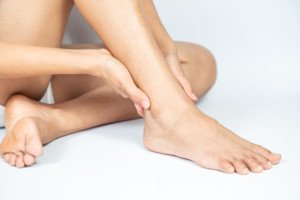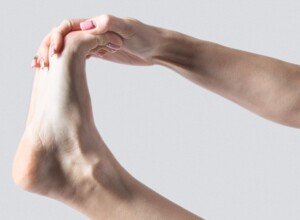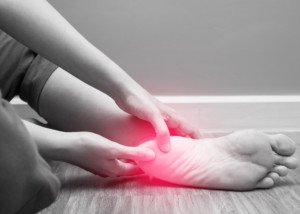
Are you under 50, not previously injured but keep waking with stiff feet in the morning that soon return to normal once you’re up and about?
Stiff Feet, No Injury
“Stiff feet in the morning can be caused by a number of underlying conditions,” says Arielle Levitan, MD, board certified in internal medicine and co-founder of Vous Vitamin LLC and co-author of “The Vitamin Solution: Two Doctors Clear the Confusion About Vitamins and Your Health.”
“Most commonly, a condition called plantar fasciitis causes people to have stiffness in their feet when they first wake up,” continues Dr. Levitan.
“This is an inflammation along the bottom of the foot.” The tissue affected are ligamentous bands called plantar fascia.
Along with the morning stiffness in the foot caused by plantar fasciitis is also a burning type of pain — in the arch and/or bottom of the heel.
Only one foot may be affected, but for some people, both feet are affected by this common disorder for which being overweight is a risk factor.
Other Causes of Stiff Feet in the Morning
“Other conditions that can cause stiffness in the feet upon waking up also include various forms of arthritis, tendinitis (Achilles) or less commonly certain vitamin deficiencies such as vitamin D deficiency that results in muscle stiffness,” explains Dr. Levitan.
Prevention of Stiff Morning Feet
“Stretching out the feet can make a big difference,” says Dr. Levitan.
“Some people also sleep with ankle braces to prevent the stiffness in the morning.

Stretching out the feet can make a big difference. Freepik/yanalya
“Vitamin D replacement and sometimes a magnesium replacement can help with these types of symptoms.”
If there is no pain with the stiffness, and soon after you’re up and about, your feet feel normal, there’s no need to be concerned.
The situation may simply be related to lying still in a bed for many hours – especially in an older body. Inert joints can become stiff, and all they need is some movement to unstiffen.
To help prevent or minimize morning foot stiffness, you should consider taking up a physical activity that stretches and really uses the feet, such as yoga, hiking, jogging, step aerobics or martial arts.
Now if there’s pain along the arch and/or the bottom of the heel, you can place your bet on plantar fasciitis – for which there’s a variety of treatment options available such as ultrasound-guided injection, Botox or stretching, and exercises.
 Dr. Levitan is board certified in internal medicine and has a special interest in women’s health and preventive medicine.
Dr. Levitan is board certified in internal medicine and has a special interest in women’s health and preventive medicine.
 Lorra Garrick is a former personal trainer certified by the American Council on Exercise. At Bally Total Fitness she trained clients of all ages for fat loss, muscle building, fitness and improved health.
Lorra Garrick is a former personal trainer certified by the American Council on Exercise. At Bally Total Fitness she trained clients of all ages for fat loss, muscle building, fitness and improved health.
.








































